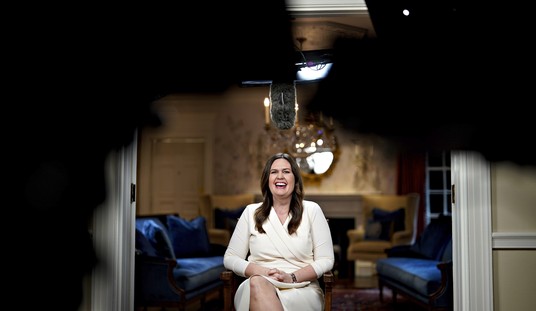Have you sold your house yet? Taken advantage of market conditions to buy a new one? It may be too late already, thanks to inflation and the Biden administration’s utter incoherence on it. If it’s not yet too late, the Washington Post reports, it’s about to be:
Mortgage rates swelled above 5 percent for the first time in more than a decade — an unexpectedly rapid ascent that has begun to temper the U.S. housing boom and could usher new uncertainty into an economy dogged by soaring inflation.
The 30-year fixed-rate mortgage, the most popular home loan product, hit the threshold just five weeks after surpassing 4 percent, according to Freddie Mac data released Thursday. The average has not been this high since February 2011.
The run-up comes as the Federal Reserve has launched a major initiative to rein in the highest inflation in 40 years. Fed officials are betting that higher interest rates will slash inflation and recalibrate the job market. But their plan also rests on the assumption that higher rates will cool demand for housing, especially while homes themselves are in such short supply.
The Washington Post describes the rapidity of the rate change as a surprise to economists. Really? To be fair, they also include a rebuke to those shocked, shocked that all of those signals from the Federal Reserve have resulted in pre-emptive interest rate hikes, especially as inflation keeps skyrocketing:
“I’m not surprised that rates have hit 5 percent, but I am surprised that everyone else is surprised,” Curtis Wood, founder and chief executive of Bee, a mobile mortgage app, said via email. “If you look at historical action by the Fed in a high-rate environment and compare that to what the Fed is doing today, the Fed is underreacting to the reality of inflation in the economy.
“I’m surprised that rates aren’t at 6 percent right now,” he added, “and wouldn’t be shocked if they’re at 7 percent by end of year.”
One year ago, just as inflation started climbing rapidly, the average rate was 3.04%. Want to see what a 7% average mortgage interest rate would look like in historical terms? Freddie Mac has data going back fifty years, and we can chart this out in chunks or as a whole. Here’s the entire series up until the last week of 2021, when the average 30-year fixed rate was 3.11%:

Less than four months later, the AFRM on a 30-year note has jumped up by almost two full percentage points, an increase of forty percent over the baseline. If we get to seven percent by the end of the year, that would exceed a doubling of the rate within a single year. And at this rate of increase, a 7% AFRM on a 30-year note might be a conservative bet.
We haven’t crossed the 7% mark in over twenty years. Why? In large part because the Fed and the federal government has acted to keep money costs down, participating in ongoing monetary expansions in large part to spur home-buying. Those impulses fueled the disastrous housing bubble that led to the crash in 2008, thanks to the wide-spreading poison of monetized bad debt throughout the financial system. Instead of learning a lesson from that episode, the Fed and the Obama administration in particular pressed on with a dozen years of monetary expansions to cover for anemic growth in the wake of the Great Recession. Thomas Hoenig got pushed out of the Fed for warning that the Ben Bernanke/Obama admin policies of “quantitative easing” would lead to massive inflation and even more asset bubbles.
The Fed has apparently decided to reverse course too late, now that the massive inflation that Hoenig warned would appear has finally arrived. What about the asset bubbles in real estate that monetary-supply expansions may have helped create? If interest rates really accelerate this year — which seems inevitable now, since only Fed rate hikes can stall inflation — then that may end up halting the rapid increases in demand for home sales. That would impact people who bought for commercial purposes, planning to use inflated equity as leverage for profit, if demand suddenly drops. That would indeed puncture an asset bubble, although it wouldn’t be as bad as we saw in 2008.
So far, the WSJ reports, demand is keeping up. But that’s not going to last forever:
Rates’ fastest three-month increase since 1987 has made the housing market ground zero for the Federal Reserve’s efforts to tame inflation. Home buyers, already facing surging house prices, are now contending with a substantial increase in financing expenses, further lifting monthly payments.
A year ago, buying the median American home at prevailing rates meant a monthly mortgage bill of about $1,223 after a 20% down payment, according to calculations by George Ratiu, an economist at Realtor.com. At recent rates, such a purchase would require a monthly payment of nearly $1,700—a 38% increase, he estimated. …
Though rising rates have made buying more expensive, the housing market has remained tight. The S&P CoreLogic Case-Shiller National Home Price Index rose 19.2% in the year that ended in January.
That in itself smells like an asset bubble. Again, assuming that the mortgages already sold are solid, that won’t necessarily lead to a financial collapse a la 2008, but that is an assumption. Even apart from the risk of financial collapse, the higher interest rates will still leave a lot of homeowners potentially under water if higher interest rates quench demand and valuations start rolling backwards. It might freeze a lot of working- and middle-class households in place for several years, as the increased cost of buying and the reduction in value for their owned assets will prevent them from having enough leverage to scale up. And that itself has implications for long-term economic growth, let alone the impact for those who haven’t yet bought a home and have to enter the market for the first time.
If you haven’t already taken advantage of the market, you’re likely to find yourself out of luck. It was fun while it lasted. This is what happens when government creates bubbles with cheap money and has no policy answer for the long-term detrimental impacts those short-term sugar highs create.








Join the conversation as a VIP Member